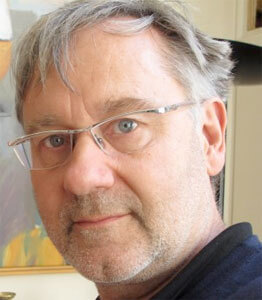The focus of the German photographer Michael Wolf’s work is life in megacities. many of his projects document the architecture and the vernacular culture of metropolises. Wolf grew up in Canada, Europe, and the United States, studying at UC Berkeley and at the Folkwang School with Otto Steinert in Essen, Germany.
He moved to Hong Kong in 1994 where he worked for 8 years as a contract photographer for
Stern Magazine.
Since 2001, Wolf has been focusing on his own projects, many of which have been published as books. Wolf’s work has been exhibited in numerous locations, including the
Venice Bienniale for Architecture,
Aperture Gallery, New York;
Museum Centre Vapriikki, Tempere, Finland, the
Museum for Work in Hamburg, Germany,
Hong Kong Shenzhen Biennial, the
Museum of Contemporary Photography, Chicago.
His work is held in many permanent collections, including the metropolitan museum of art in New York the Brooklyn Museum, the San Jose Museum of Art, California; the
Museum of Contemporary Photography, Chicago; the
Museum Folkwang, Essen, Germany and the
German Museum for Architecture, Frankfurt, Germany. He has won first prize in the
World Press Photo Award competition on two occasions (2005 & 2010) and an honorable mention (2011) In 2010, Wolf was shortlisted for the
Prix Pictet photography prize.
He has published more than 13 photo books including
Bottrop Ebel 1976 (Peperoni Press, 2012),
Tokyo Compression Three (Peperoni Press / Asia One, 2012),
Architecture of Density (Peperoni Press / Asia One, 2012),
Hong Kong Corner Houses (Hong Kong University Press, 2011),
Portraits (Superlabo, Japan, 2011),
Tokyo Compression Revisited (Peperoni Press / Asia One, 2011),
Real Fake Art (Peperoni Press / Asia One, 2011),
FY (Peperoni Press, 2010),
A Series of Unfortunate Events (Peperoni Press, 2010),
Tokyo Compression (Peperoni Press / Asia One, 2010),
Hong Kong Inside-Outside (Peperoni Press / Asia One, 2009),
The Transparent City (Aperture, 2008) and
Sitting in China (Steidl, 2002).
Source: photomichaelwolf.com
Michael Wolf’s work examines life in the layered urban landscape, addressing juxtapositions of public and private space, anonymity and individuality, history, and modern development. In a diverse array of photographic projects, from street views appropriated from Google Earth, to portraits capturing the crush of the Tokyo Subway, and dizzying architectural landscapes, Wolf explores the density of city life.
Wolf currently lives and works in Hong Kong and Paris. His photographs are in the permanent collections at the
Metropolitan Museum of Art, New York; the
Folkwang Museum, Essen, Germany;
The Brooklyn Museum; the
Cleveland Museum of Art; the
Nelson-Atkins Art Museum, Kansas City; and the
Museum of Contemporary Photography, Chicago among others, and have been exhibited at the
Museum of Photographic Arts, San Diego (2011),
Goethe Institute in Hong Kong (2010),
Fotographie Museum, Amsterdam (2010),
Museum of Contemporary Photography, Chicago (2008),
Victoria and Albert Museum, London (2008), and the
Massachusetts Museum of Contemporary Art (2008), among others.
Wolf was awarded First Place in the 2010
World Press Photo Award contest in the
Daily Life category, and was shortlisted for the 2010
Prix Pictet. Wolf's numerous monographs include
Tokyo Compression Revisited (Peperoni Books, 2011),
Real Fake Art (Peperoni Books, 2011),
Tokyo Compression (Peperoni Books, 2010),
Hong Kong: Inside/Outside (Peperoni Books, 2009),
The Transparent City (Aperture and MoCP, 2008),
Hong Kong: Front Door/Back Door, (Thames & Hudson, 2005), and
Sitting in China (Steidl, 2002).
Source: Robert Koch Gallery
Michael Wolf was born in 1954 in Munich, Germany. He grew up in the United States, Europe, and Canada, and studied at UC Berkeley and at the Folkwang School in Essen, Germany. In 1994, Wolf moved to Hong Kong and worked for eight years as a contract photographer for Stern magazine, until he left to pursue his own projects. Wolf's photographic work in Asia focuses on the city and its architectural structures and follows on from his interest in people and human interaction. He has published seven photobooks to date. Wolf's work has been exhibited extensively in galleries and art fairs throughout the world since 2005 and is held in permanent collections across the US and Germany. Wolf has won previously won a World Press Photo award, the first prize in Contemporary Issues stories in 2005.
Source: World Press Photo
